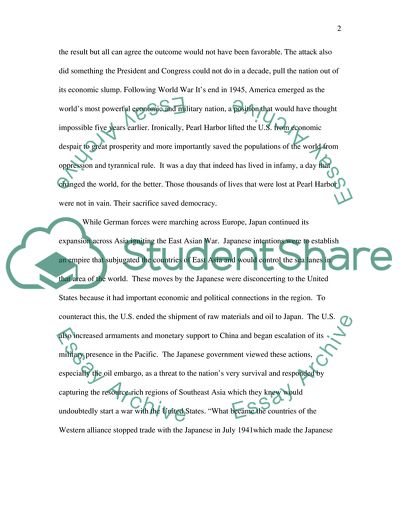Cite this document
(The Importance of Pearl Harbor Essay Example | Topics and Well Written Essays - 3000 words, n.d.)
The Importance of Pearl Harbor Essay Example | Topics and Well Written Essays - 3000 words. https://studentshare.org/history/1711776-pearl-harbor
The Importance of Pearl Harbor Essay Example | Topics and Well Written Essays - 3000 words. https://studentshare.org/history/1711776-pearl-harbor
(The Importance of Pearl Harbor Essay Example | Topics and Well Written Essays - 3000 Words)
The Importance of Pearl Harbor Essay Example | Topics and Well Written Essays - 3000 Words. https://studentshare.org/history/1711776-pearl-harbor.
The Importance of Pearl Harbor Essay Example | Topics and Well Written Essays - 3000 Words. https://studentshare.org/history/1711776-pearl-harbor.
“The Importance of Pearl Harbor Essay Example | Topics and Well Written Essays - 3000 Words”. https://studentshare.org/history/1711776-pearl-harbor.


